Tip of the Month – September 2017: Teaching ‘YES’ and ‘NO’ to Confirm or Reject
Purpose of this guide:
To provide an alternative way for people to indicate a confirmation or a rejection of a choice, when they are not physically able to point to their choice, AND when they are not able to use a universal head nod / head shake to indicate yes or no.
Why teach ‘YES’ and ‘NO’?
Yes’ and ‘no’ are an important part of communication. We use these to accept/reject things, confirm information, make choices, and more. Some people with complex communication needs are not physically able to point directly to objects or symbols to communicate what they want. These people would benefit from learning an alternative way to indicate. They can do this by learning to give a YES or NO response to confirm or reject options presented to them by their communication partners; this is extremely important when using Partner-Assisted Scanning to help someone communicate. Given time, consistency and many opportunities to practise, anyone can learn to give a YES/NO response.
What is YES and NO?
The meaning of YES/NO changes based on the type of question being asked. For example:
· Using YES/NO to Confirm or Reject requests
o Q: Do you want a banana?
o A: YES = ‘I want this’ (confirm) and NO = ‘I don’t want this’ (reject).
· Using YES/NO to obtain information
o Q: Is this a banana?
o A: YES = ‘that is a banana’ and NO = ‘that is not a banana’.
Using YES/NO to confirm or reject is an earlier developing skill which requires lower demand on memory, vocabulary and comprehension, compared to using YES/NO to answer information seeking questions. This is because requests (e.g. ‘Yes, I want a banana’) require a different level of comprehension to labels (e.g. ‘No, that is not a banana’) where the client needs to understand the label (e.g. a banana), and understand the clarifying question.
People with complex communication needs should work on developing YES/NO to confirm or reject FIRST.
Different Types of YES/NO
There are many different ways that people can communicate YES/ NO. A clear verbal response or physical head nod/shake will be the most universally understood. However, these options can be difficult for people with complex physical needs and limited verbal communication. Some alternative ways of giving a YES or NO response are listed below.
| · Sign language or gesture (thumbs up/down)  | · Eye movement (up for YES, to the side or down for NO)  |
| · Pointing with eyes, hands or another body part to YES/NO symbols 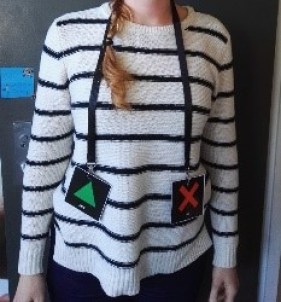 | · Activating a YES or NO switch/single message button  |
Note: It is not recommended to accept eye contact or a smile/frown as YES/NO as these could also mean that the client is happy, nervous, or that what’s happening reminds them of something funny.
Talk to your Speech Language Therapist or Occupational Therapist about what might be the best way for someone to communicate their individual method of YES/NO.
Teaching YES/NO
1. Identify which type of YES/NO you are going to teach as in the different examples above.
2. Start by modelling this type of YES/NO frequently and consistently throughout the day when making choices so that you are showing the person how they could respond. i.e.
· Physical head nod/shake: slowly move your head up/down (YES) and side to side (NO). Exaggerate the movement so it is obvious. Also tell the client “I am moving my head up and down to tell you YES” or “I am moving my head side to side to tell you NO”. You can also use YES and NO signs and move these slowly up/down (YES) or side to side (NO) to give the person something to visually track; this can often encourage some movement of the head.
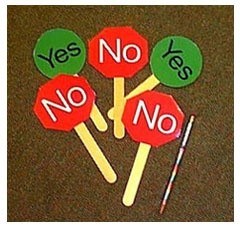
· YES/NO visuals: Wear these on a lanyard around your neck. YES on your right, NO on your left. When you say YES, move your YES symbol forward and show the person “I’m saying YES”. Do the same when saying NO.
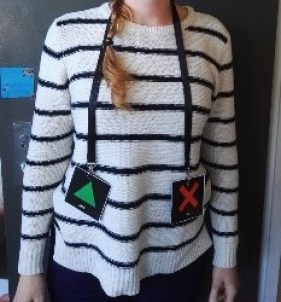
- YES/NO buttons: These need to be positioned close to the person where they will easily be able to access them throughout the day. When you make a YES choice, tap their YES button and likewise for a NO. A low tech version of this could be made using symbols attached to a tray table or head rest, for example. Where people have YES/NO attached to their headrest, you may need to explicitly tell them what you are doing when you are modelling as itis difficult to see i.e. “I’m going to press your YES button/picture because YES I want that".
· Eye movement and gestures: As with the above examples, model the behaviour you are trying to teach. Again with some people, you may need to tell them explicitly what you are doing i.e. “I move my eyes up for YES” or “I move my eyes to the side for NO”.
When modelling, go slow and be enthusiastic. Always verbally reinforce your YES and NO by saying these words or something similar i.e. “I’m saying NO” at the same time as you model the alternative method of communicating NO.
3. Start shaping the person’s YES/NO response. Remember that it takes time for someone to develop a movement or the ability to look at a symbol consistently for a length of time. Initially a head nod/ shake, eye movement, gesture or reach for a YES/NO symbol may be subtle and small. This can be shaped into a more obvious YES/NO over time. Once a small movement or look is established, you can increase your expectations for the person to give you a bigger clearer movement, or hold their gaze on a symbol or eye movement for longer.
Physical head nod/shake: If physically able to, this is a useful method for teaching YES/NO as it is universally understood. In the initial learning stages, it can help to provide a target for someone to aim their head movement towards i.e. placing the fingers of each hand or YES/NO buttons about 2cm away from their cheek and chin. Encourage them to move their chin/cheek towards your fingers/the buttons while you model a head nod or shake. You could verbally remind them by saying “down for yes, side for no”. If the person touches your fingers, activates the buttons or moves towards the targets with their chin or cheek, this should be accepted and acted on as a YES/NO response accordingly. This can then be shaped into a more obvious choice over time. The buttons/use of finger as targets should be faded out over time.
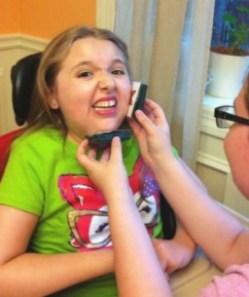 | 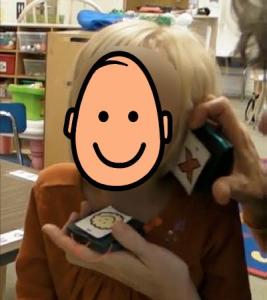 |
http://lburkhart.com/handouts/Light%20Com%20part%201%2050%20min%205%2012%20handout.pdf
4. Always reinforce what YES and NO mean (for confirming or rejecting) by acting appropriately on the persons response i.e. if they give a ‘YES’ response then give them the item offered i.e. a drink. If they give a ‘NO’ response, then do not give the offered item. If this causes an issue and they get upset, wait a short time, ask the question again and model your own YES response i.e. “YES you want the drink” to help them learn the appropriate way to say YES. In assuming intentionality by taking the persons response as meaningful and acting on this, we are then teaching intentionality.
Key things to remember:
· Give lots of wait time
· Always model a verbal YES/NO, no matter what alternative YES/NO method you are modelling and teaching.
· Try not to say, "Tell me yes or no"
· Teach YES/NO in fun, motivating and interesting activities and situations. Ideas for activities can be found below.
· Be consistent with your approach. Everyone should do it the same way every time.
· Be consistent with use of YES e.g. do not ask, “do you want the cup, or no”, instead ask “do you want the cup” and wait for the individual to respond. If they do not respond, model the options e.g. “you can tell me, yes if you want the cup, or no if you don’t want the cup”
Useful Resources and Links
There are some great resources available including books, songs and visuals to help engage people with learning YES and NO. You can also create your own age appropriate resources. Follow the links below to find out more.
YES/NO Songs:
We have created a playlist of songs that help reinforce YES/NO for accepting and rejecting. https://www.youtube.com/playlist?list=PLdtbRx1dk8rLZ6F-cNmY4JDGw7cWIVM1P

| NO Rat-a-tat-tat, who is that? It’s Mr No I take my head to the side, side, side I take my head to the other side, side, side I shake my head and I say No! (Sing) My head is shaking, shaking, shaking My head is shaking, I can say No! | YES Rat-a-tat-tat, who is that? It’s Mrs Yes I take my head up, up, up I take my head down, down, down I nod my head up and down and I say Yes! (Sing) My head is nodding, nodding, nodding My head is nodding, I can say Yes! |
| Provided to TalkLink by the Cerebral Palsy Education Centre - CPEC |
- https://www.facebook.com/wespeakpodd/videos/1584823048254820/ - “We Speak PODD” – video link for teaching Yes/no Head Movements
YES/NO Games:
· “Is that right?" Game: A fun and silly game to teach YES/NO to confirm or reject. Question of the Day: A great game to include during morning circle.
http://teachinglearnerswithmultipleneeds.blogspot.co.nz/2012/12/the-yesno-series-part-four.html
YES/NO Books:
 | 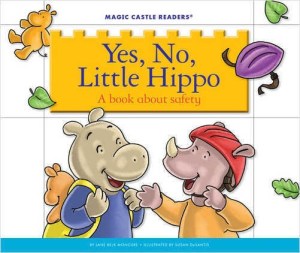 | 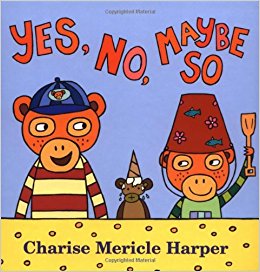 |
http://teachinglearnerswithmultipleneeds.blogspot.co.nz/2012/12/the-yesno-series-part-five.html
References
Teaching Learners with Multiple Special Needs: The Yes/No Series (6 parts) by Kate Ahern.
Light Tech Communication part 1. Partner-Assisted Scanning: yes/no by Linda Burkhart.
http://lburkhart.com/handouts/Light%20Com%20part%201%2050%20min%205%2012%20handout.pdf
We Speak PODD Facebook Page https://www.facebook.com/wespeakpodd/
Created by Bridget Thompson, Speech Language Therapist 11 August 2017
Updated by Pariya Behnami, Speech Language Therapist
8 October 2018
To download this Tip of the Month as a PDF, please click here
Purpose of this guide:
To provide an alternative way for people to indicate a confirmation or a rejection of a choice, when they are not physically able to point to their choice, AND when they are not able to use a universal head nod / head shake to indicate yes or no.
Why teach ‘YES’ and ‘NO’?
Yes’ and ‘no’ are an important part of communication. We use these to accept/reject things, confirm information, make choices, and more. Some people with complex communication needs are not physically able to point directly to objects or symbols to communicate what they want. These people would benefit from learning an alternative way to indicate. They can do this by learning to give a YES or NO response to confirm or reject options presented to them by their communication partners; this is extremely important when using Partner-Assisted Scanning to help someone communicate. Given time, consistency and many opportunities to practise, anyone can learn to give a YES/NO response.
What is YES and NO?
The meaning of YES/NO changes based on the type of question being asked. For example:
· Using YES/NO to Confirm or Reject requests
o Q: Do you want a banana?
o A: YES = ‘I want this’ (confirm) and NO = ‘I don’t want this’ (reject).
· Using YES/NO to obtain information
o Q: Is this a banana?
o A: YES = ‘that is a banana’ and NO = ‘that is not a banana’.
Using YES/NO to confirm or reject is an earlier developing skill which requires lower demand on memory, vocabulary and comprehension, compared to using YES/NO to answer information seeking questions. This is because requests (e.g. ‘Yes, I want a banana’) require a different level of comprehension to labels (e.g. ‘No, that is not a banana’) where the client needs to understand the label (e.g. a banana), and understand the clarifying question.
People with complex communication needs should work on developing YES/NO to confirm or reject FIRST.
Different Types of YES/NO
There are many different ways that people can communicate YES/ NO. A clear verbal response or physical head nod/shake will be the most universally understood. However, these options can be difficult for people with complex physical needs and limited verbal communication. Some alternative ways of giving a YES or NO response are listed below.
| · Sign language or gesture (thumbs up/down)  | · Eye movement (up for YES, to the side or down for NO)  |
| · Pointing with eyes, hands or another body part to YES/NO symbols  | · Activating a YES or NO switch/single message button  |
Note: It is not recommended to accept eye contact or a smile/frown as YES/NO as these could also mean that the client is happy, nervous, or that what’s happening reminds them of something funny.
Talk to your Speech Language Therapist or Occupational Therapist about what might be the best way for someone to communicate their individual method of YES/NO.
Teaching YES/NO
1. Identify which type of YES/NO you are going to teach as in the different examples above.
2. Start by modelling this type of YES/NO frequently and consistently throughout the day when making choices so that you are showing the person how they could respond. i.e.
· Physical head nod/shake: slowly move your head up/down (YES) and side to side (NO). Exaggerate the movement so it is obvious. Also tell the client “I am moving my head up and down to tell you YES” or “I am moving my head side to side to tell you NO”. You can also use YES and NO signs and move these slowly up/down (YES) or side to side (NO) to give the person something to visually track; this can often encourage some movement of the head.

· YES/NO visuals: Wear these on a lanyard around your neck. YES on your right, NO on your left. When you say YES, move your YES symbol forward and show the person “I’m saying YES”. Do the same when saying NO.

- YES/NO buttons: These need to be positioned close to the person where they will easily be able to access them throughout the day. When you make a YES choice, tap their YES button and likewise for a NO. A low tech version of this could be made using symbols attached to a tray table or head rest, for example. Where people have YES/NO attached to their headrest, you may need to explicitly tell them what you are doing when you are modelling as itis difficult to see i.e. “I’m going to press your YES button/picture because YES I want that".
· Eye movement and gestures: As with the above examples, model the behaviour you are trying to teach. Again with some people, you may need to tell them explicitly what you are doing i.e. “I move my eyes up for YES” or “I move my eyes to the side for NO”.
When modelling, go slow and be enthusiastic. Always verbally reinforce your YES and NO by saying these words or something similar i.e. “I’m saying NO” at the same time as you model the alternative method of communicating NO.
3. Start shaping the person’s YES/NO response. Remember that it takes time for someone to develop a movement or the ability to look at a symbol consistently for a length of time. Initially a head nod/ shake, eye movement, gesture or reach for a YES/NO symbol may be subtle and small. This can be shaped into a more obvious YES/NO over time. Once a small movement or look is established, you can increase your expectations for the person to give you a bigger clearer movement, or hold their gaze on a symbol or eye movement for longer.
Physical head nod/shake: If physically able to, this is a useful method for teaching YES/NO as it is universally understood. In the initial learning stages, it can help to provide a target for someone to aim their head movement towards i.e. placing the fingers of each hand or YES/NO buttons about 2cm away from their cheek and chin. Encourage them to move their chin/cheek towards your fingers/the buttons while you model a head nod or shake. You could verbally remind them by saying “down for yes, side for no”. If the person touches your fingers, activates the buttons or moves towards the targets with their chin or cheek, this should be accepted and acted on as a YES/NO response accordingly. This can then be shaped into a more obvious choice over time. The buttons/use of finger as targets should be faded out over time.
 |  |
http://lburkhart.com/handouts/Light%20Com%20part%201%2050%20min%205%2012%20handout.pdf
4. Always reinforce what YES and NO mean (for confirming or rejecting) by acting appropriately on the persons response i.e. if they give a ‘YES’ response then give them the item offered i.e. a drink. If they give a ‘NO’ response, then do not give the offered item. If this causes an issue and they get upset, wait a short time, ask the question again and model your own YES response i.e. “YES you want the drink” to help them learn the appropriate way to say YES. In assuming intentionality by taking the persons response as meaningful and acting on this, we are then teaching intentionality.
Key things to remember:
· Give lots of wait time
· Always model a verbal YES/NO, no matter what alternative YES/NO method you are modelling and teaching.
· Try not to say, "Tell me yes or no"
· Teach YES/NO in fun, motivating and interesting activities and situations. Ideas for activities can be found below.
· Be consistent with your approach. Everyone should do it the same way every time.
· Be consistent with use of YES e.g. do not ask, “do you want the cup, or no”, instead ask “do you want the cup” and wait for the individual to respond. If they do not respond, model the options e.g. “you can tell me, yes if you want the cup, or no if you don’t want the cup”
Useful Resources and Links
There are some great resources available including books, songs and visuals to help engage people with learning YES and NO. You can also create your own age appropriate resources. Follow the links below to find out more.
YES/NO Songs:
We have created a playlist of songs that help reinforce YES/NO for accepting and rejecting. https://www.youtube.com/playlist?list=PLdtbRx1dk8rLZ6F-cNmY4JDGw7cWIVM1P

| NO Rat-a-tat-tat, who is that? It’s Mr No I take my head to the side, side, side I take my head to the other side, side, side I shake my head and I say No! (Sing) My head is shaking, shaking, shaking My head is shaking, I can say No! | YES Rat-a-tat-tat, who is that? It’s Mrs Yes I take my head up, up, up I take my head down, down, down I nod my head up and down and I say Yes! (Sing) My head is nodding, nodding, nodding My head is nodding, I can say Yes! |
| Provided to TalkLink by the Cerebral Palsy Education Centre - CPEC |
- https://www.facebook.com/wespeakpodd/videos/1584823048254820/ - “We Speak PODD” – video link for teaching Yes/no Head Movements
YES/NO Games:
· “Is that right?" Game: A fun and silly game to teach YES/NO to confirm or reject. Question of the Day: A great game to include during morning circle.
http://teachinglearnerswithmultipleneeds.blogspot.co.nz/2012/12/the-yesno-series-part-four.html
YES/NO Books:
 |  |  |
http://teachinglearnerswithmultipleneeds.blogspot.co.nz/2012/12/the-yesno-series-part-five.html
References
Teaching Learners with Multiple Special Needs: The Yes/No Series (6 parts) by Kate Ahern.
Light Tech Communication part 1. Partner-Assisted Scanning: yes/no by Linda Burkhart.
http://lburkhart.com/handouts/Light%20Com%20part%201%2050%20min%205%2012%20handout.pdf
We Speak PODD Facebook Page https://www.facebook.com/wespeakpodd/
Created by Bridget Thompson, Speech Language Therapist 11 August 2017
Updated by Pariya Behnami, Speech Language Therapist
8 October 2018
To download this Tip of the Month as a PDF, please click here
